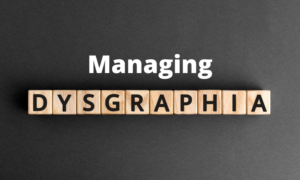
Recommended therapies for dysgraphia
Dysgraphia is a life-long condition – there is no cure or medication but there are a few therapies for dysgraphia to manage the symptoms. That does not mean, though, that people with dysgraphia cannot succeed at writing and do other language-based activities.
Recommended therapies for dysgraphia are providing support at school, occupational therapy outside of school, and things being done at home to help the child.
Handwriting struggle and struggle with letter formation are primarily addressed by occupational therapy. The aim of occupational therapy is to gradually make the physical act of writing, the most commonly challenging thing in dysgraphia, less daunting to a child, where the idea of expressing themselves on paper does not cause physical or emotional strain.
Another crucial therapy for dysgraphia is to involve the school administration and teachers to provide accommodations that help the children cope with the various struggles associated with dysgraphia. Parents may approach the school to request the needed services and support if the child is formally diagnosed with dysgraphia.
Helping a child at home to better cope with dysgraphia is also one of the recommended therapies for dysgraphia. Parents must first, understand the areas in which their child particularly struggles and provide help accordingly.